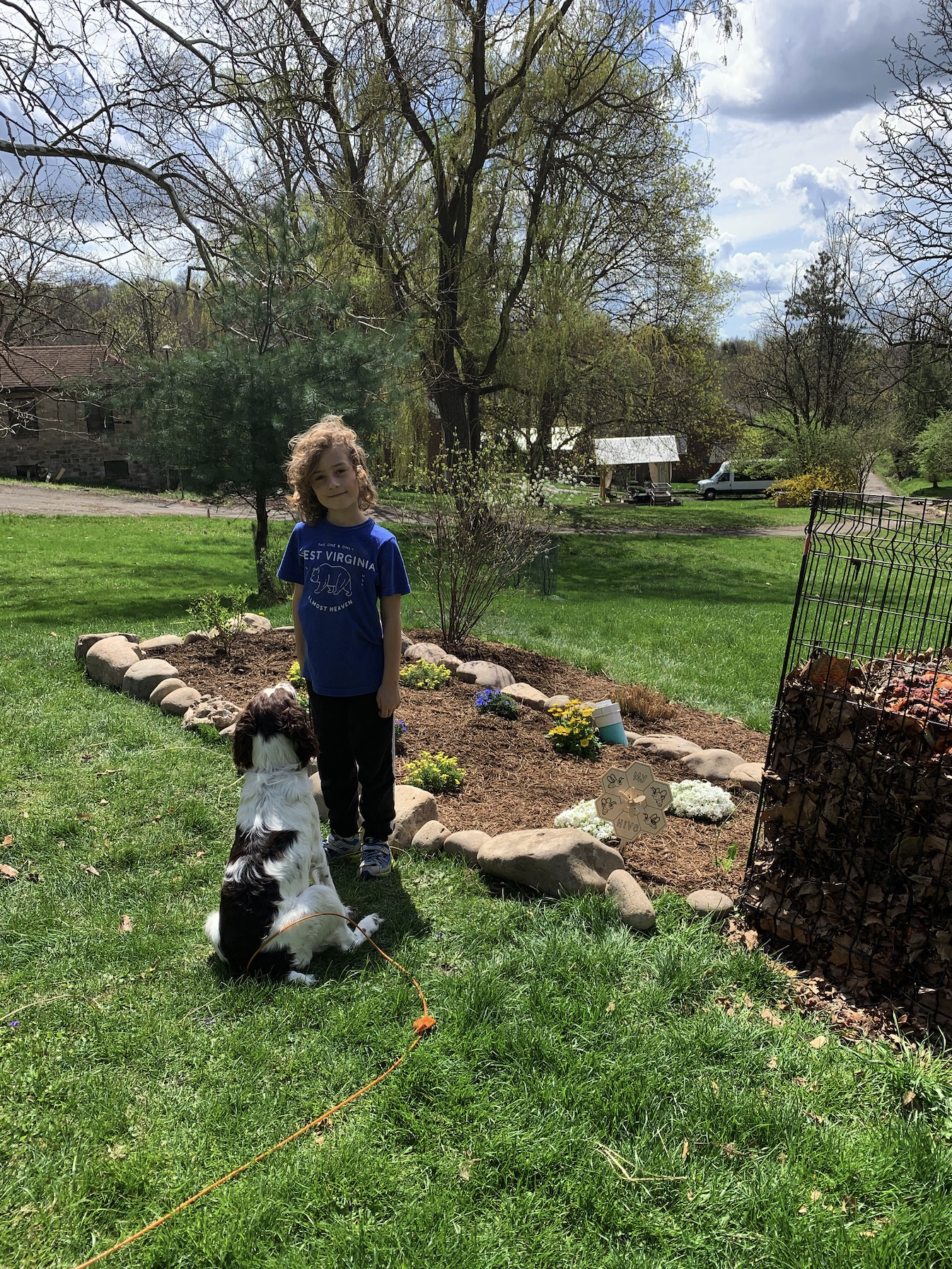Written by Robert Dunn
This spring our oldest son, Emmett (8 years old), decided that he wanted to use a part of our backyard in East Washington to plant flowers that would attract and help honeybees. He purchased the book Planting for Honeybees: The Grower’s Guide to Creating a Buzz by Sarah Wyndham Lewis (https://www.hardiegrant.com/uk/publishing/bookfinder/book/planting-for-honeybees-by-sarah-wyndham-lewis/9781787131460) from Phipps Conservatory and used it as a reference for what types of plants would work best.
One thing he learned from this book is that there are approximately 25,000 bee species in the world but only 7 species are honeybees and they are particularly important since they play such a crucial role in the pollination of many plants. He also learned trees are really important for honeybees, that they particularly like flowers that are white, blue, or yellow (especially dandelions!), and that they don’t like red flowers since they see them as black. After a bit of searching at local garden centers we ended up planting jubilee gold wallflower, leopard’s bane, heavenly blue lithodora, creeping phlox, blue globe thistle, coneflowers, and a cherry tree. These are all perennials so hopefully the honeybee garden (as we call it) will be a welcoming place for honeybees for many years to come – and we will try to mow our grass less often to let those dandelions grow!

The included picture is of Emmett and his honeybee garden. You can see we picked a spot beside our compost bin and our puppy Willow is also making a guest appearance. One thing we have noticed over the last couple of years is that the bees really love when we add watermelon and cantaloupe rinds to our compost – hopefully the new flowers will get them to stick around a bit longer!

